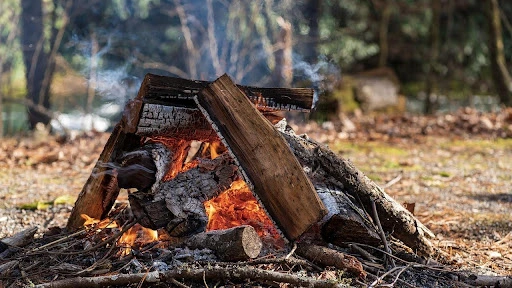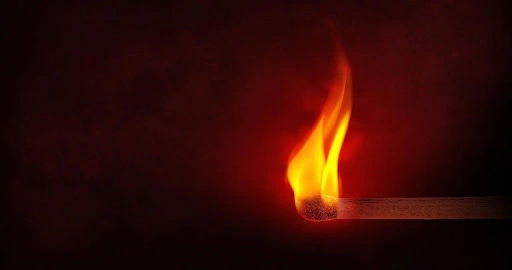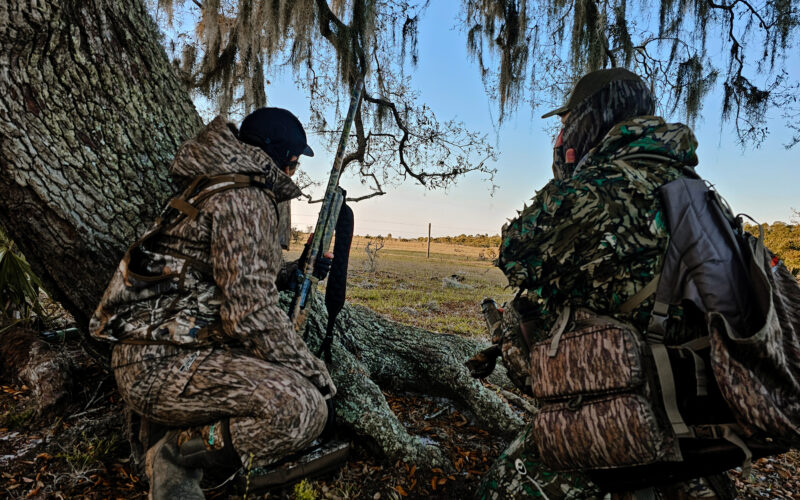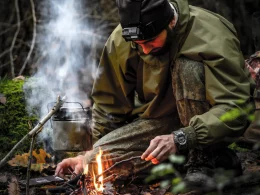I’ve always been fascinated by fire—its raw energy, its warmth, the way it crackles like a living thing. But getting a fire going? That’s where the real magic happens. Over years of camping, experimenting in the woods, and even failing spectacularly in the rain, I’ve learned what makes a fantastic firestarter.
It’s not just one thing—it’s a combination of materials that ignite fast, burn long, and laugh in the face of wind or dampness. Let’s break down the ingredients that make an unstoppable firestarter and explore how to mix them to create something that’ll keep your flame alive, no matter the conditions.
Table of Contents
Why Firestarters Matter
The right firestarter can mean the difference between warmth and shivering in the dark. I once spent a soggy night in Northern Ontario, Canada (actually many nights), fumbling with wet matches and soggy newspaper, wishing I’d packed something better. That’s when I started tinkering with homemade firestarters, determined never to be caught off guard again. The goal? Create something portable, reliable, and strong enough to withstand harsh conditions.
The Core Ingredients of a Great Firestarter
Every firestarter needs three things: ignitability, burn duration, and resilience. Think of it like a recipe—each material brings something. Here are the standout ingredients I’ve tested, why they work, and how they can be combined for maximum effect.
Highly Flammable Base Materials
The base is what catches the spark first. It’s got to ignite fast, like a sprinter off the starting block. My go-to choices?
- Dryer Lint: This stuff is like fire candy. It’s free, fluffy, and catches a spark faster than you can say “laundry day.” I stuff it into my firestarters for instant ignition. Pro tip: lint from cotton or wool clothes works better than synthetic blends.
- Cotton Balls: Soft, airy, and absurdly flammable cotton balls are a classic. I’ve lit them with a single spark from a Ferro rod, and they flare up like tiny suns. They’re cheap and easy to pack.
- Sawdust or Wood Shavings: Fine sawdust from a workshop or curls from a hand plane ignite quickly and add a bit of bulk. I once used cedar shavings from a friend’s woodworking project—my fire smelled like a forest spa.
Why It Works: These dry, fibrous materials have a high surface area, perfect for catching a spark or flame. They’re the kindling of your firestarter, setting the stage for the heavier hitters.
Fuel for a Sustained Burn
Once your base ignites, you need something to keep the fire going. This is where fuels come in—materials that burn hot and long, giving your kindling or logs time to catch. Here’s what I’ve found works best:
- Wax (Paraffin or Beeswax): I melt old candle stubs or buy paraffin in bulk, then soak my base materials. The wax slows the burn, making it steady and long-lasting. Beeswax adds a sweet, natural scent, but paraffin’s cheaper for big batches.
- Petroleum Jelly: Smear some Vaseline on a cotton ball, and you have a firestarter that burns for minutes. I’ve seen a single petroleum-soaked cotton ball keep a flame going for nearly 10 minutes in a drizzle. It’s messy to prep, but it’s worth it.
- Charcoal Dust: Leftover charcoal bits from a grill, crushed into powder, add serious staying power. I mix it with wax to create a slow-burning core. It’s like giving your firestarter a backbone.
Why It Works: These fuels have high energy content and burn slowly, providing a consistent flame that transfers heat to more significant fuel sources like twigs or logs. They also add water resistance, which is crucial for damp conditions.
Structural Elements for Durability
A firestarter must hold together, especially if carrying it in a backpack or using it in windy conditions. Structural materials give your creation shape and resilience. My favorites:
- Cardboard or Egg Cartons: Egg cartons are my secret weapon. I fill each cup with lint and wax, creating compact, portable firestarters. Cardboard strips rolled tightly and dipped in wax also work.
- Pinecones: Nature’s firestarter chassis. I stuff pinecones with sawdust and wax for a rustic, effective option. They’re free if you’ve got pine trees nearby, and they look cool.
- Cotton String or Twine: Wrapping your firestarter in twine adds durability and acts like a wick, helping the flame spread. I’ve used jute twine to tie up wax-soaked cardboard rolls, which burn like mini torches.
Why It Works: These materials provide a framework that keeps your firestarter intact during transport and burning. They also contribute to the burn by catching fire or channeling flames to the core materials.
Optional Boosters for Extreme Conditions
Sometimes, you need extra firepower—especially in wet or windy weather. These boosters can take your firestarter to the next level:
- Rubbing Alcohol or Hand Sanitizer: A splash of alcohol-soaked cotton ignites instantly, even in damp conditions. I’ve used hand sanitizer in a pinch, which works like a charm. Just be sure to get one that has alcohol in it!
- Magnesium Shavings: Sprinkled sparingly, magnesium shavings create a white-hot spark that can ignite almost anything. I add a pinch to my firestarters for emergency kits.
- Duct Tape: Believe it or not, duct tape burns like crazy. I’ve wrapped small bundles of lint and wax in duct tape for a weatherproof, slow-burning starter. It’s like MacGyver meets Smokey Bear.
Why It Works: Boosters enhance ignitability and resilience, making your firestarter more versatile. They’re handy for survival scenarios or unpredictable weather.
Combining Ingredients for the Ultimate Firestarter
Here’s where the fun begins—mixing and matching to create a firestarter that suits your needs. Think of it like building a custom recipe. I’ve spent hours melting wax, stuffing pinecones, and testing combos at my campsites.
My Go-To Firestarter: Wax-Soaked Cotton Balls
Take a cotton ball, knead it in a pea-sized blob of petroleum jelly, and dip it in melted paraffin. Let it cool, and you have a cheap, portable firestarter that burns for 5-7 minutes. I carry these in a tin for every camping trip. They’ve never let me down, even when the wind howled like a banshee.
How to Make It:
- Spread petroleum jelly into cotton balls until they’re saturated but not dripping.
- Melt paraffin wax in a double boiler (old candles work great).
- Dip each cotton ball in wax, coating it thoroughly, and set it on wax paper to harden.
- Store in a waterproof container.
Why It’s Great: The cotton ignites fast, the petroleum jelly burns hot, and the wax adds water resistance and burn time. It’s a triple threat.
The Pinecone Powerhouse
Stuff a pinecone with dryer lint, drizzle melted wax and wrap it with jute twine. This one’s a showstopper—rustic, effective, and burns for 10-15 minutes. I made a batch for a family camping trip, and my kids loved watching them flare up.
How to Make It:
- Collect dry pinecones (smaller ones are easier to pack).
- Stuff lint into the gaps between scales.
- Pour melted wax over the pinecone, letting it soak in.
- Tie with twine for extra structure.
- Let cool and store in a bag.
Why It’s Great: The pinecone’s natural resin adds fuel, the lint ignites easily, and the wax-twine combo ensures a long, steady burn.
The Cardboard Torch
Roll a strip of cardboard into an old tuna or cat food can, stuff it with sawdust and fill the entire thing with liquid wax. These burn like mini logs, perfect for starting a fire in harsh conditions. I once used one to start a fire in a snowstorm, and it felt like a small victory against the elements.
How to Make It:
- Cut the cardboard into 6-inch strips, about 2 inches wide.
- Roll the cardboard tightly into the shallow can. Sprinkle in the sawdust and pat the can so the shavings go into it.
- Pour in the melted wax
- Let harden and store.
Why It’s Great: The cardboard provides structure and burn time, the sawdust-wax mix burns hot and long, and the wax seals it against moisture.
Final Thoughts
Crafting a firestarter is more than just a practical skill—it’s a chance to play, create, and connect with the elemental power of fire. I love when a spark catches, and a tiny flame grows into something unstoppable. It’s a reminder that you can conquer almost anything with the right ingredients. So, grab some lint, melt some wax, and start experimenting.










